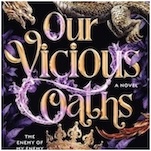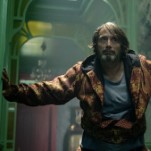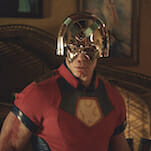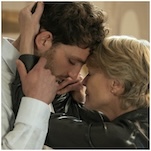The 10 Scariest Moments in Stop-Motion Movies
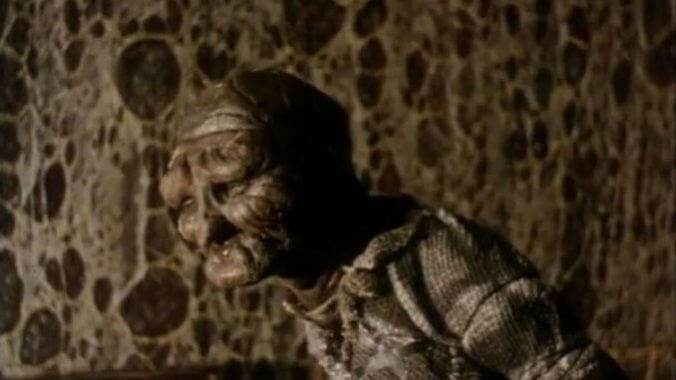
The most memorable and impactful stop-motion moments from our childhood were all the really freaky ones. Perhaps it’s because the medium lends itself so readily to creepiness; there’s a lot of charm to Aardman’s Claymation figurines or Lego-mation YouTube clips, but the ways stop-motion can make characters contort and bend, the way every pose and movement is meticulously provoked by human hands, and the way faces are pulled into strange expressions results in an oddly tangible sense of unease. Even imagining the animator locked away in a dark room manipulating their little puppets, building a domain of their own design, can be a little unsettling. More than other animation styles, stop-motion constantly reminds us of the unseen puppeteer controlling everything we see.
With Guillermo del Toro’s stop-motion rendition of Pinocchio hitting Netflix, a whole wave of children are about to learn the hard lesson we all received as kids: Animation can be scary. Del Toro and Mark Gustafson’s film feels like an amalgamation of Hollywood stop-motion storytelling, and all the weird, adult horror shorts animators have experimented with for decades.
Here’s a breakdown of the 10 scariest moments in stop-motion:
10. Mad Hatter Scene, Jan Švankmajer’s Alice (1988)
I don’t know if any of you knew this, but it turns out Lewis Carroll’s Alice in Wonderland can be interpreted in twisted, surreal ways. Once you’ve recovered from that cultural bombshell, take a look at legendary Czech animator Jan Švankmajer’s masterful adaptation, where young Alice explores Wonderland from the confines of a labyrinthine array of cramped rooms, led ever onwards by an intense white rabbit. The sock with human teeth masquerading as The Caterpillar is some potent nightmare fuel, but it’s the delirium of the Mad Hatter’s Tea Party that takes the cake as the creepiest segment. Here, overbearing sound effects and intense close-ups highlight how strange our party guests look and move. The repeated sewing of the March Hare’s eye and the buzzing jerkiness of the characters’ movements in particular are utter delights.
9. The Sandman Ascends, The Sandman (1991)
This Oscar-nominated short is based on the European version of the fairytale (meaning it’s a lot more messed-up), and is a brilliant exercise in character design and movement. A young boy’s fears of a monster he thinks he caught a glimpse of are brought to life by a crooked, spindly but strangely graceful rendition of the Sandman, who creeps delicately up stairs and slinks in darkness, hellbent on taking the boy’s eyes. With a haunting score and expressionist visuals, animator Paul Berry captures a profoundly childlike sense of dread, with not even the boy’s mother able to stop what he fears most.
8. The Assassin Descends, Mad God
Some of the scariest moments in Mad God, the Odyssean voyage into abject horror created over decades by SFX pioneer Phil Tippett, are not captured in stop-motion. A nurse reluctantly handing a baby over to a looming plague doctor, a studio laugh-track playing over silent-era footage of grisly experiments; a vast range of filmmaking techniques bringing Tippett’s mutated and malformed world to life. But often, Tippett takes advantage of the uncanny, jerky qualities of stop-motion to unsettle his audience, illustrated early in the film by the gas-masked Assassin’s descent into subterranean chaos. We get snapshot glances of things left unobserved and disregarded: A wailing hairy monkey reaching for help on an operating table; a high council of electric chairs delivering or extracting shocks to or from faceless beings; a small, hollow metal child in a filthy corner. Even mundane sightings, like a reptile swimming in a tank, feel creepy.
7. “Going Down,” Aardman’s Stage Fright
Before Wallace and Gromit and Creature Comforts, British animation giant Aardman tried their hand at off-the-wall horror shorts, combining broad British comedy with darker impulses. But this Gothic short set in a vaudeville theater at the dawn of silent film made a lasting impression despite its obscurity—not least because it was included on the Wallace & Gromit: The Curse of the Were-Rabbit DVD for unsuspecting children (like me) to be traumatized by. In it, a timid performer of dog tricks named Tiny is bullied by a brutish silent film star, but when the actor throws Tiny in the theater’s orchestra pit and turns to attack his co-stars (an actress and trained dogs), the theater curtain falls, killing him. At this point, a ghostly organ player arises, pulling Tiny to safety and summoning the ghost of the actor to his organ. The snarled, ghostly face of the organ player raises his hands and utters two words in the most booming, menacing voice—and children across Britain watched in horror as the actor descended forever into the black void.
-

-

-

-

-

-

-

-

-

-

-

-

-

-

-

-

-

-

-

-

-

-

-

-

-

-

-

-

-

-

-

-

-

-

-

-

-

-

-

-































